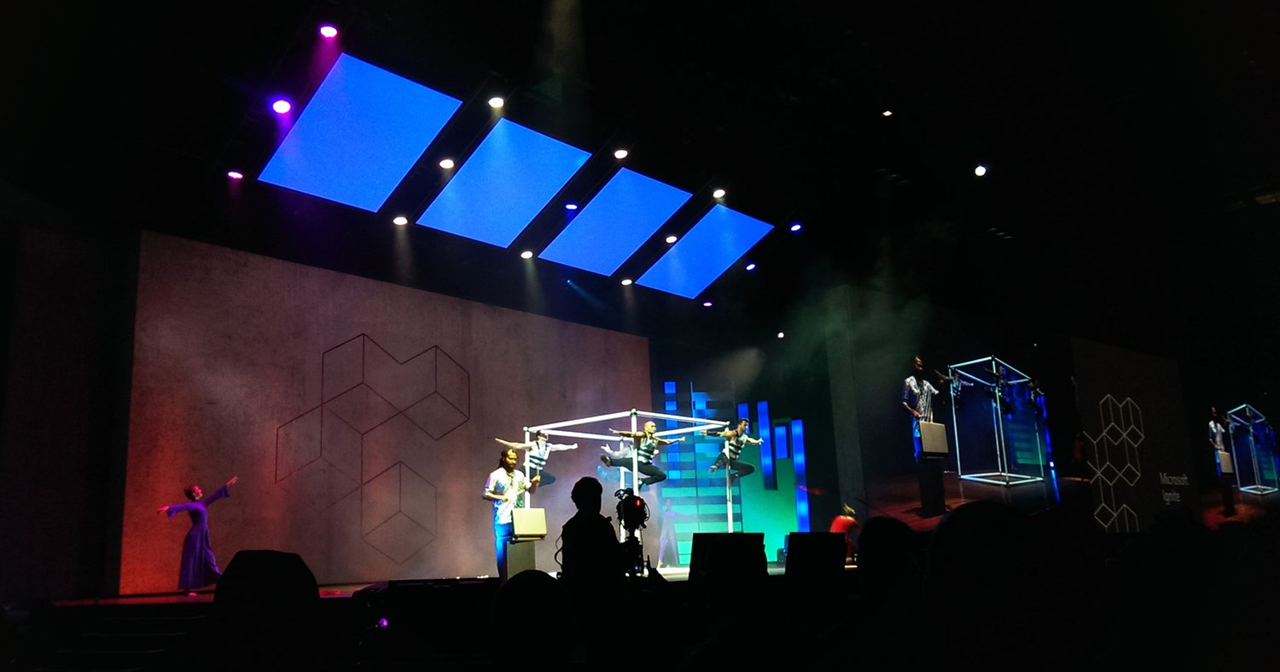Building a winning keynote: Lessons from Microsoft Ignite 2018
Last month, our team travelled to Orlando, Florida for Microsoft’s Ignite conference where more than 20,000 IT professionals gathered.
We helped produce several of the general session keynotes, including the Modern Teamwork keynote that received the highest audience ratings. Congratulations to Microsoft executive, Lori Wright, and her extraordinary team!
For those of you who are called upon to write, produce or deliver keynotes, we’d like to share a few things we learned from Ignite:
1. Create a keynote blueprint
The first step in every keynote we produce is to create the blueprint. To us, a keynote blueprint should include three parts:
AUDIENCE
Who is the primary and secondary target audience? Are they mostly in the room or joining online? Why did they come today? What are their hopes, dreams, fears, challenges, etc.?
TARGET OUTCOMES
At the end of this keynote, what do you want the audience think? How do you want them to feel? What do you want them to do?
STORYFLOW
What content and messages do you need to include in the keynote that will give you the best chances of achieving the Target Outcomes? The storyflow is more than an outline or agenda. It’s a succinct narrative that conveys how the story unfolds from one segment to another.
For Ignite, we had the dozens of people working on various parts of the keynote. Our keynote blueprint helped all of us to stay aligned and moving towards the same outcomes.
2. Focus on singular theme
Many times keynotes, especially at big industry events, become the vehicle for product announcements and other key messages. It’s easy for keynotes to become just a collection of messages, instead of a cohesive story. The challenge is finding that single memorable idea (sometimes called the “red thread”) that ties all the messages together. For the Modern Teamwork keynote, our idea was pretty simple: “Microsoft 365 empowers teams to achieve more together.” Everything in the keynote tied back to and amplified this idea.
3. Start strong
The opening of the keynote is very important. In those first few minutes, you need to capture attention and set the tone. What will you do to get folks to unplug from their phones and focus on what’s happening on stage? Some use an opening video or audience participation to capture attention. Whatever you decide, make sure it’s compelling enough to pull those eye balls off screens. At Ignite, we used a live performance with acrobats and dancers to open the keynote in a surprising way and set the stage for our theme of teamwork.
4. Show, Not Tell
None one wants “death by Power Point.” If at all possible, keep the talking to slides to a minimum and find ways to show the audience reasons to believe. The most memorable keynotes have plenty of product demos, on-stage customer testimonials, compelling videos, and other ways to bring the story to life.
5. Keep it moving
Attention spans are shrinking! So keep the keynote moving at a steady pace. Keep the transitions between speakers quick and clean by cutting out the formal introductions to cheesy walk-on music. Every five minutes or so, do something different – a demo, a video, audience interaction – to keep people tuned in.
6. Finish strong
The rule of primacy and recency tell us that people tend to remember the first thing and the last thing in a keynote. So the closing is as important as the opening. The ending should not just be a list of calls to action or a summary of key messages. Think of ways to tie back to the theme and end in an inspiring way.

